Introduction
Toshiba VFDs, or Toshiba Variable Frequency Drives, are essential devices used in motor control and automation. They help manage the speed and torque of electric motors by adjusting the frequency and voltage supplied to them. Understanding Toshiba VFDs is crucial for engineers, technicians, and anyone involved in industrial applications. These drives are particularly popular in various sectors due to their efficiency and reliability. In this article, we’ll explore what Toshiba VFDs are, how they work, and why they matter in today’s technology-driven world.
Why Toshiba VFDs Are Important
Toshiba VFDs offer numerous advantages that make them a preferred choice in many industries:
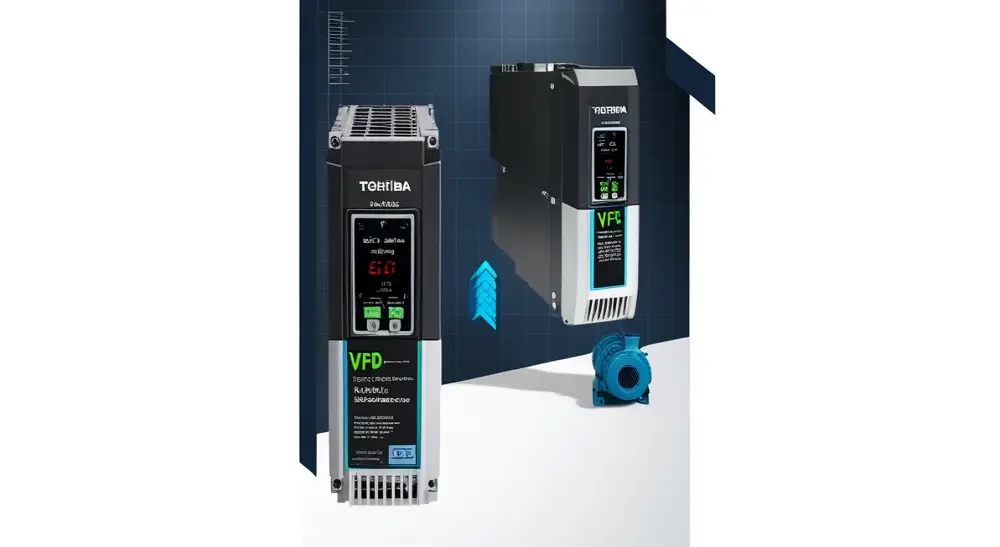
- Energy Savings: By controlling motor speed, Toshiba VFDs can significantly reduce energy consumption. This not only lowers electricity bills but also contributes to environmental sustainability.
- Safety and Reliability: These drives are designed with safety features that protect both the equipment and operators. They ensure smooth starts and stops, reducing mechanical stress on motors.
- Improved Process Control: With precise speed control, Toshiba VFDs enhance the efficiency of various processes, from manufacturing to HVAC systems. This leads to better product quality and operational efficiency.
How Toshiba VFDs Work
Toshiba VFDs operate on a straightforward principle. They convert incoming AC (Alternating Current) power into DC (Direct Current) and then back into AC at the desired frequency and voltage. Here’s a breakdown of the key components:
- Inverter: This component converts DC back to AC, allowing for adjustable frequency and voltage.
- Control Circuit: This manages the operation of the VFD, ensuring the motor runs at the required speed and torque.
- User Interface: Many Toshiba VFDs come with user-friendly interfaces that allow for easy programming and monitoring.
Visual Description
Imagine a flowchart where electricity enters the VFD, is converted to DC, and then back to AC. The inverter adjusts the frequency to control motor speed. This simple yet effective process is what makes Toshiba VFDs so valuable.
Types and Features of Toshiba VFDs
Toshiba offers a range of VFDs tailored for different applications. Here’s a quick overview:
Low-Voltage vs. High-Voltage VFDs
- Low-Voltage VFDs: Ideal for smaller motors, commonly used in HVAC and conveyor systems.
- High-Voltage VFDs: Suitable for larger industrial applications, such as pumps and fans.
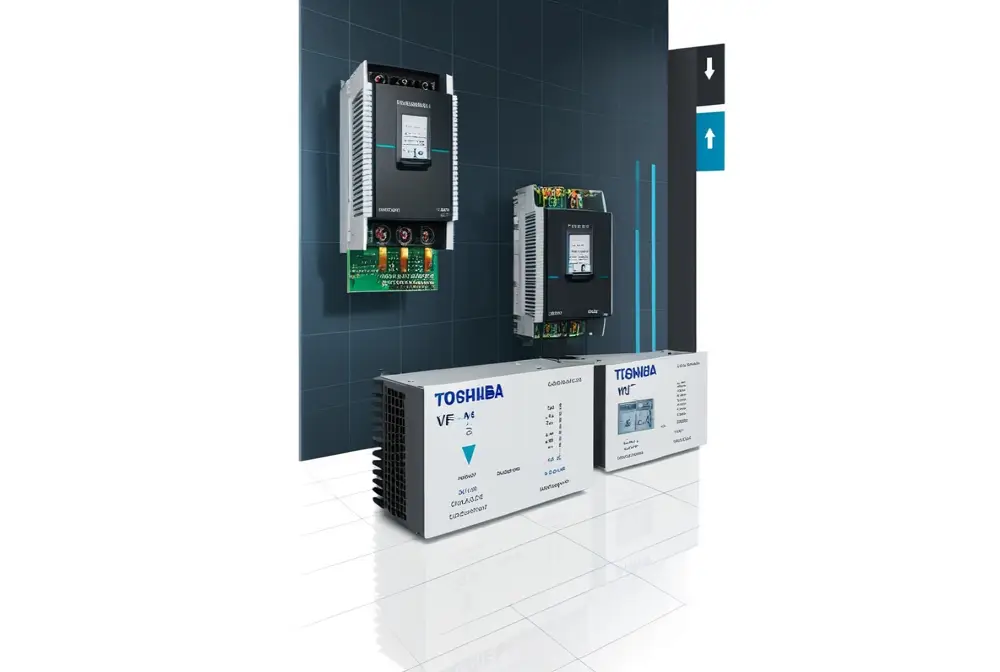
Toshiba VFDs are known for their high-performance capabilities in demanding industrial environments
Key Features
- Programmability: Many models allow users to customize settings for specific applications.
- Overload Protection: This feature protects motors from damage due to excessive current.
- Communication Interfaces: Toshiba VFDs often include options for networking and remote monitoring.
Comparison Table of Models
| Model | Voltage Range | Key Features |
| Toshiba VF-A | Low Voltage | Easy programming, overload protection |
| Toshiba VF-S9 | High Voltage | Advanced communication, high efficiency |
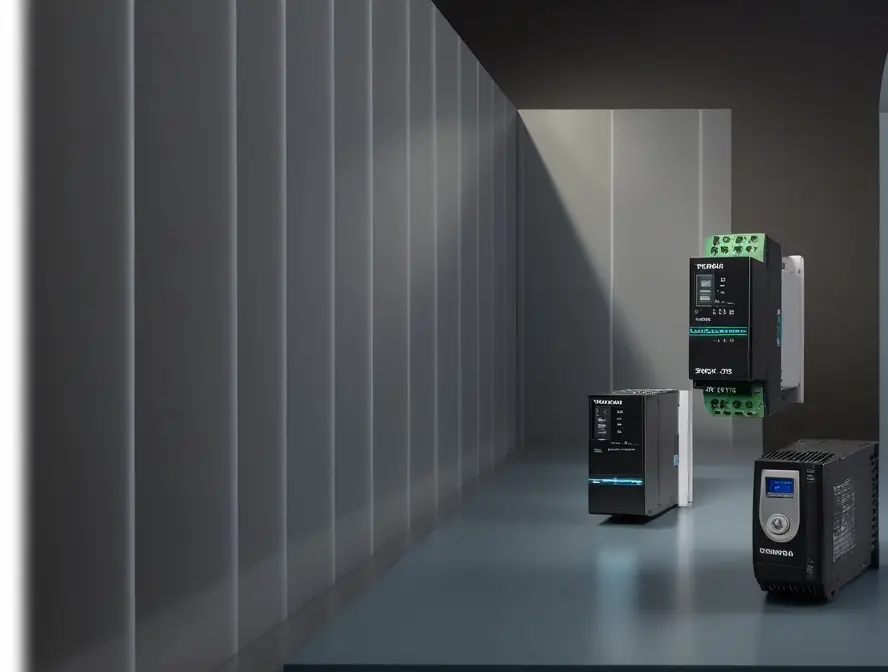
Comparing Toshiba VFDs to Other Brands
When comparing Toshiba VFDs to brands like ABB or Siemens, several advantages stand out:
- Cost-Effectiveness: Toshiba VFDs often provide similar features at a lower price point.
- User-Friendly Design: Many users find Toshiba’s interface easier to navigate compared to competitors.
- Real-World Performance: Case studies show that Toshiba VFDs maintain efficiency and reliability in demanding environments.
Compare Toshiba VFDs with ABB VFDs to find the best option for your needs.
How to Choose the Right Toshiba VFD For Your Application
Selecting the right VFD is crucial for optimal performance. Here are some guidelines:
Considerations
- Motor Size: Ensure the VFD matches the motor’s power rating.
- Load Type: Different applications may require specific features.
- Environmental Factors: Consider temperature, humidity, and dust levels.
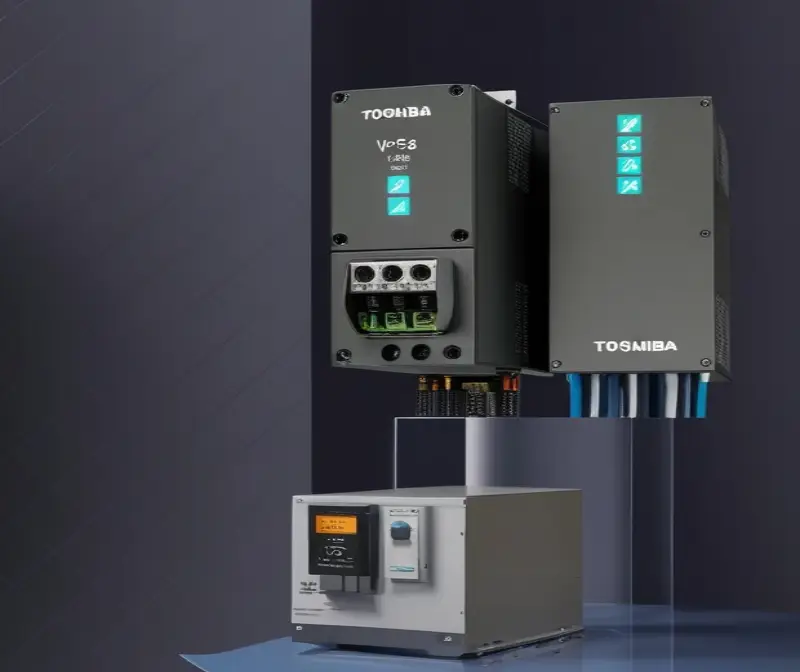
Selection Checklist
- Identify motor specifications.
- Determine application requirements.
- Review available features and compatibility.
Buyer Tips
- Research: Look for reviews and comparisons online.
- Consult Experts: Don’t hesitate to ask for advice from professionals.
Installation and Wiring Tips for Toshiba VFDs
Proper installation is key to the performance of Toshiba VFDs. Here are some essential tips:
Basic Wiring Diagrams
Follow manufacturer guidelines for wiring. Typically, connect the motor leads to the VFD outputs and the power supply to the inputs.
Safety Precautions
- Always disconnect power before installation.
- Use appropriate personal protective equipment (PPE).
Troubleshooting Tips
If the VFD doesn’t operate as expected, check:
- Wiring connections.
- Input power supply.
- Settings on the control panel.
Where to Buy Toshiba VFDs
You can purchase Toshiba VFDs from various sources:
- Reputable Suppliers: Companies like Grainger and Motion Industries offer a range of Toshiba products.
- Online Marketplaces: Websites like Amazon often have competitive prices.
Tips for Checking Authenticity
- Look for authorized distributors.
- Check for warranties and return policies.
Real-World Applications of Toshiba VFDs
Toshiba VFDs are widely used across different sectors:
- Industrial Automation: Control motors in manufacturing processes.
- HVAC Systems: Regulate airflow and temperature efficiently.
- Manufacturing Equipment: Enhance the performance of conveyor belts and assembly lines.
Case Studies
- Example Scenario: A manufacturing plant reduced energy costs by 30% after implementing Toshiba VFDs in their conveyor systems.
Frequently Asked Questions (FAQs)
Toshiba VFDs are known for their cost-effectiveness, user-friendly interfaces, and reliable performance.
Follow the manufacturer’s wiring diagrams, ensure power is off during installation, and use appropriate safety gear.
Yes, they can be adapted for both settings, depending on the motor type and application needs.
Toshiba VFDs help reduce energy consumption by controlling motor speed, leading to lower electricity bills and reduced environmental impact.
Conclusion
In summary, Toshiba VFDs are vital tools for anyone involved in motor control and automation. They offer significant benefits in energy savings, reliability, and process efficiency. Whether you are an engineer, technician, or hobbyist, understanding and utilizing Toshiba VFDs can enhance your projects and operations.
For further reading, check out our articles on Electric Motor Starters and 3 Phase Motor Starters for more information on related topics.
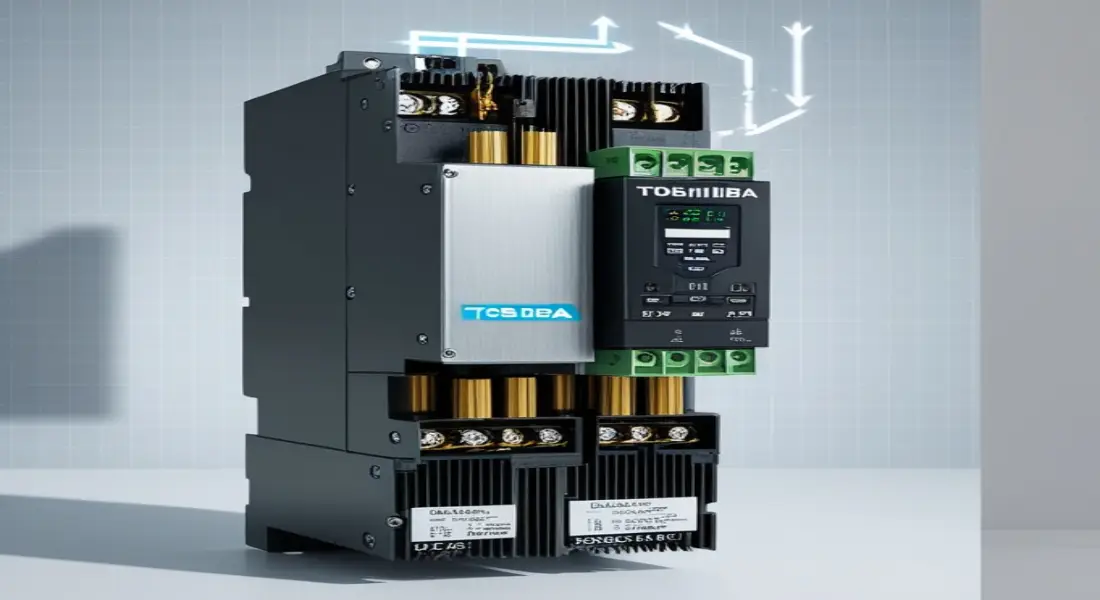



4 thoughts on “Toshiba VFDs: How They Work, Key Features & Buying Guide”